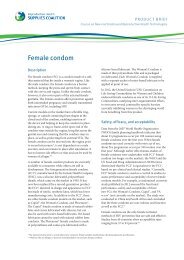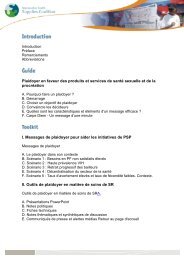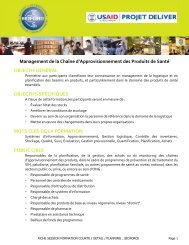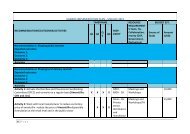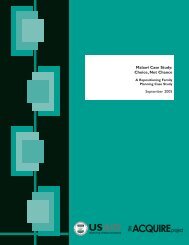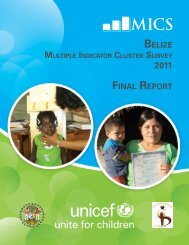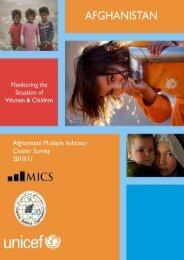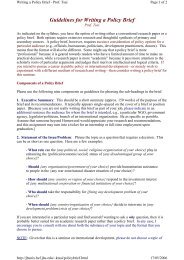Zambia Case Study: Ready for Change - Reproductive Health ...
Zambia Case Study: Ready for Change - Reproductive Health ...
Zambia Case Study: Ready for Change - Reproductive Health ...
You also want an ePaper? Increase the reach of your titles
YUMPU automatically turns print PDFs into web optimized ePapers that Google loves.
example, 24% of listeners to any radio program were currently using modern<br />
contraceptives, compared with only 12% of nonlisteners. Viewers of television programs<br />
were almost three times as likely to be using modern contraception as were nonviewers<br />
(30% vs. 14%). Exposure to family planning messages increased significantly in urban<br />
areas, rising from 58% to 74%. In rural areas, this proportion rose slightly, from 27% to<br />
33%. Exposure to family planning messages was higher in Copperbelt and Lusaka than in<br />
other provinces.<br />
While these IEC activities have been effective in urban areas, respondents highlighted<br />
that less attention had been drawn to addressing the sociocultural aspects that affect<br />
fertility and contraceptive use in rural areas. UNFPA is currently trying to do this in<br />
Northwestern Province and plans to share their experiences through the <strong>Reproductive</strong><br />
<strong>Health</strong> Subcommittee.<br />
Social marketing<br />
The Society <strong>for</strong> Family <strong>Health</strong> (SFH) began work on social marketing in <strong>Zambia</strong> in 1992,<br />
with the promotion of the Maximum condom. In 1996, SFH also began marketing an oral<br />
contraceptive called SafePlan. This work has helped to broaden access and increase<br />
awareness, supplementing and rein<strong>for</strong>cing government supplies and services: “We are a<br />
team.” Since 1997, the Maximum condoms have made up roughly one-third of all<br />
condoms distributed or sold in <strong>Zambia</strong>. While SafePlan started in 1997 at only 7% of all<br />
oral contraceptive use in the country, this share increased to a high of 22% in 2002 (Table<br />
3). Data from the 2001–2002 DHS found that almost one in five pill users (19%) were<br />
using SafePlan, although this varied by urban-rural residence (22% vs. 12%). Besides<br />
being distributed through traditional outlets—pharmacies, drug stores, and kiosks—<br />
Maximum condoms and SafePlan pills are also available at rural health centers and from<br />
community based distributors, providing a valuable buffer stock when Central Board of<br />
<strong>Health</strong>’s usual supplies are exhausted.<br />
Table 3. Numbers and share of oral contraceptives and condoms distributed<br />
through social marketing program, 1997–2003 3<br />
1997 1998 1999 2000 2001 2002 2003<br />
Oral contraceptives<br />
SafePlan 193,064 288,576 339,396 446,928 517,536 507,120 595,568<br />
Public (millions) 2.3 1.7 2.1 2.2 2.4 1.4 3.4<br />
PPAZ 185,769 574,320 423,227 345,170 163,139 386,000 175,047<br />
Total (millions) 2.7 2.5 2.8 2.9 3.1 2.4 4.3<br />
SafePlan share 7.01% 11.3% 12.05% 14.9% 16.8% 21.5% 16.1%<br />
Condoms<br />
Maximum (millions) 6.6 5.2 6.6 8.5 10.1 10.1 13.1<br />
Public (millions) 13.1 12.4 12.8 15.3 17.1 16.2 32.2<br />
PPAZ - - - 80,500 258,576 130,224 56,528<br />
Private 100,000 471,000 1 mill. N/A N/A N/A N/A<br />
Total (millions) 20 18.2 20.5 24 27.4 26.5 45.4<br />
Maximum share 33% 29% 32% 36% 37% 38% 29%<br />
3 Data are from the Society <strong>for</strong> Family <strong>Health</strong>.<br />
16 Repositioning family planning—<strong>Zambia</strong> case study The ACQUIRE Project



